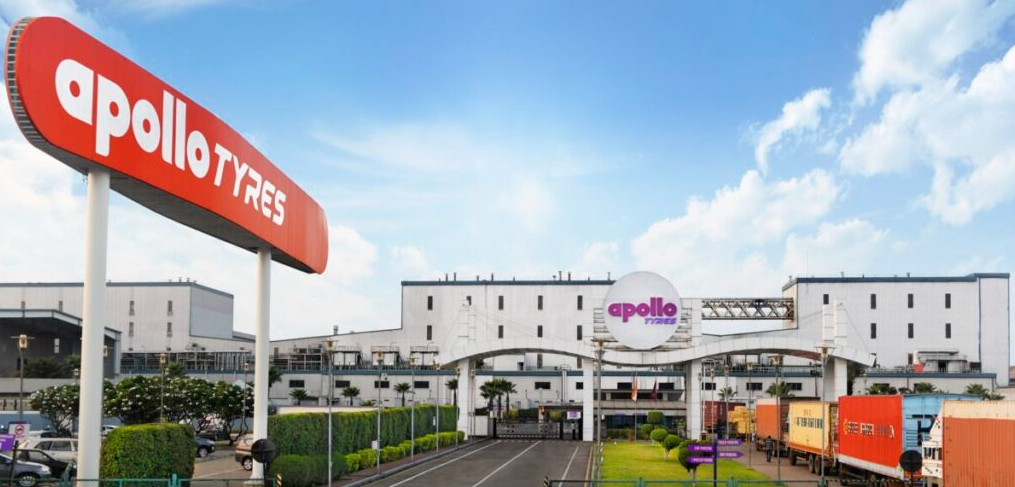
Winds of change have begun blowing across Apollo Tyres as it takes on a 2.0 avatar. The transformation is being implemented across functions and mindsets, with clear financial goals in sight. Neeraj Kanwar, the Vice Chairman and MD of Apollo Tyres, told ETAuto in an exclusive chat that results of this exercise are already visible: the company has seen increased production across facilities, reduced capital expenditure, better financial ratios and a more global approach to business.“So there’s not one region anymore…we can see synergies across all the three continents that we are working in and that will bring in more benefits to the organisation in terms of better planning, better product planning, better rationalisation of products and sweating the assets more,” Kanwar said.
At the company’s AGM last year, Chairman Onkar Kanwar had declared that Apollo had no plans of setting up greenfield manufacturing facilities in India anymore. Instead, the idea was to consolidate existing facilities and tackle “bad” costs by maximising asset utilisation and minimising investments. Well, ATL saved a whopping INR 400 crore or nearly INR 1.1 crore daily from the earmarked annual capital expenditure in 2023-24 through use of Machine Learning and Artificial Intelligence. As the demand scenario for various types of tyres fluctuated, Apollo decided to get smart about capital investments to not just save costs but also maximise bang for the buck.
So while the capex announced at the start of the fiscal year was INR 1100 crore, only INR 700 crore was actually deployed. The use of AI and ML helped Apollo remove manufacturing bottlenecks and achieve better efficiencies at lower spends.
Neeraj Kanwar said that this policy of focusing on increasing manufacturing efficiencies and scaling back capex will continue. By when will this transformation process be completed? “I can’t tell you by when, but I can tell you it’s a journey. It’s an ongoing journey because once I reach there, then again I will push people to take it to the next level…Today we have seven plants and all plants are running at different capacities…Year on year, we will keep on increasing productivity and it has already started happening. We have seen an increase of nearly 5000 tyres in passenger cars per day, spread over our five plants across India and Europe.”
Using IoT, the company has connected most of the production machines at its facilities to the cloud to create a data lake; this data is analysed using AI and ML. This single data lake, which is underpinning all of ATL’s AI and ML initiatives, together with a set of digital innovation centres in different locations is the key to maximising asset utilisation while minimising capex.
For 2024-25 too, ATL has a modest capex guidance of INR 1000 crore and in all likelihood, this number may also see a downward revision. ATL has had a heavy capital intensive cycle in the last decade, setting up large manufacturing capacities in Chennai, Hungary and in Andhra Pradesh. As on date, the company has seven facilities in all, of which five are in India and one each in Hungary and the Netherlands. Kanwar said that despite the ongoing domestic market slump for passenger cars, “we are literally hand to mouth because for us, replacement sales have been very good. OE has also not been that bad as compared to the industry and as you know, we are leaders in the car segment. So we are running capacity utilisation in passenger car tyres at nearly 98% while we are also trying to see how we can increase our premiumization in the market.”
A Mumbai based brokerage had earlier noted that capex intensity has been moderating for ATL gradually, as the company has been focussing more on capacity utilisation, strong balance sheet and high levels of profitability. “In the medium term, the company plans to cater to Indian markets through its Indian plants, European markets through Indian and Hungarian plants and the US market through Indian as well as European plants,” the brokerage had said.
Financials looking up:
Not only is it not contemplating any new facilities for now, Apollo has simultaneously sharpened its focus on profitable growth instead of overall market share. In this endeavour, the company has already altered its course, from a region/geography specific approach – where there were different presidents for Europe and India/Asia Pacific – to a global approach for every function. Neeraj Kanwar said ROCE (return on capital employed) had
already improved from below 10% to 15%; there is improved return on equity and the company’s net debt to equity ratio has gone down “well below 1. So our balance sheet ratios are really looking up. Our target is to go above 20% as far as ROCE is concerned. We are also trying to see that shareholder returns become better.”
In this bid to improve financial ratios, ATL has, for example, already begun to move away from lower rim sizes towards higher rim sizes in tyres since the latter are more profitable. Apollo is being cautious on capex due to muted volume growth expectations but the company may not be averse to increasing capacities where needed.
Pricing:
Responding to analysts questioning ATL’s pricing strategy, which may have helped competition more than the company, Neeraj Kanwar said there was no change in the pricing strategy. “It is just a surprising strategy…I have to look at myself and I have to look at the return on our investor base…And if I start looking at competition, then obviously I will not do the right thing. So today raw material is at peak, whether it’s natural rubber or oil or steel. And all of them are at their peak…So in order to have a healthy balance sheet we need to reinvest into the organisation, we need LD margins. Now there is a very fine line between share of market volume and the pricing strategy. So we will take two steps forward, one back. We will keep correcting the pricing as we go along because it is very important to get shareholder returns and I am not in favour of giving discounts and trying to get market share because that’s a very short term strategy. I’m here for a long term perspective”.
Another Mumbai based brokerage had pointed out after the Q1 FY25 results that there had been a relentless rise in natural rubber prices over the last few months and though ATL “has taken small price hikes to negate the impact, in line with its focus on profitability, it has lost some market share in the TBR replacement segment as competition has lagged in the price hikes”.
















